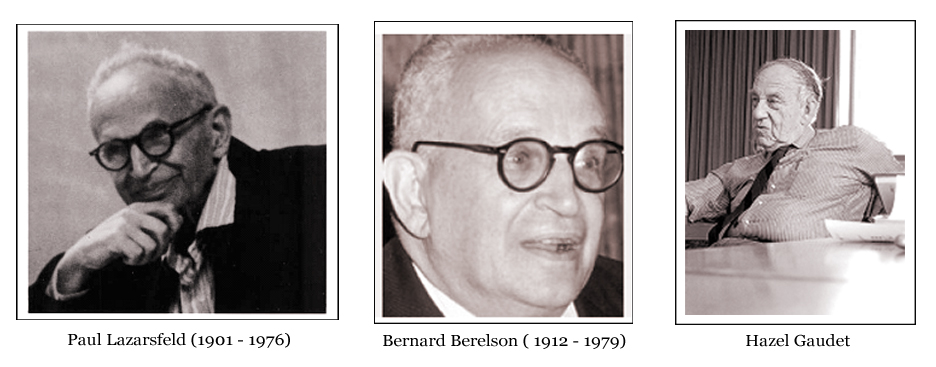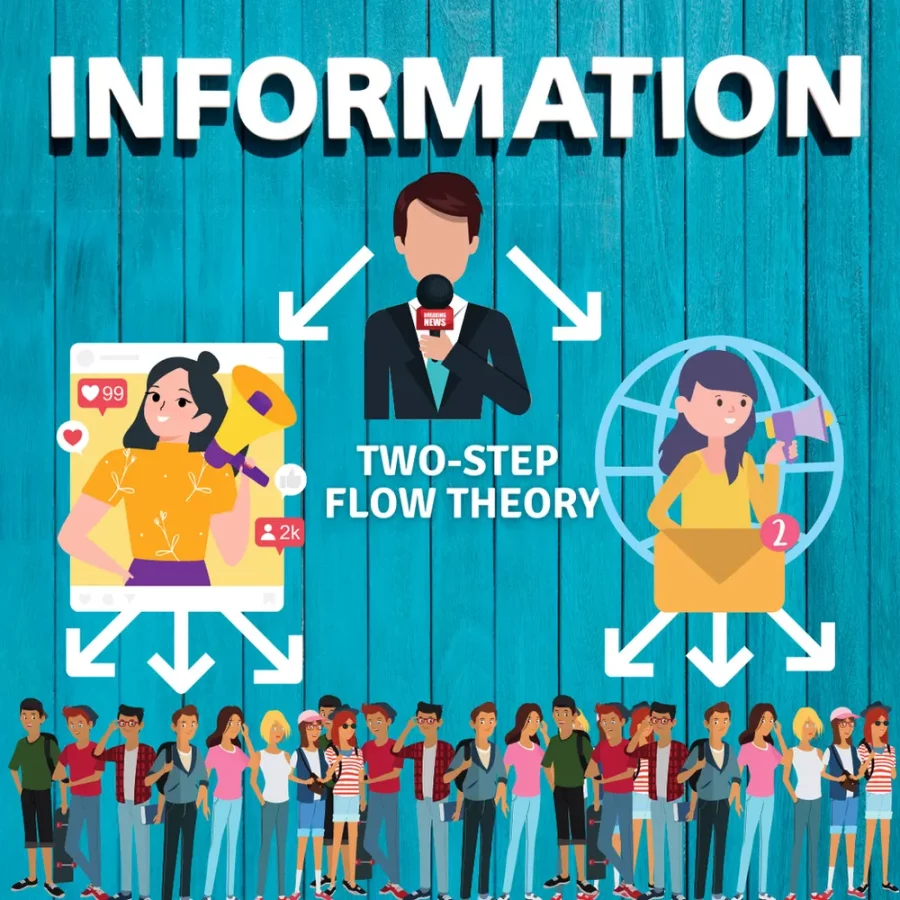The mass media have an immense impact on public opinion and have the power to change any public narrative. The “two step flow theory” was created in 1944 by Paul Lazarsfeld, Bernard Berelson, and Hazel Gaudet, which is shaped around interpersonal communication with masses through opinion leaders. This model explains how media will send information to influential opinion leaders who will relay this information to other networks and other outlets that can influence masses of people. Lazarsfeld originally created the model to observe the different causes of influence around the 1944 United States presidential election between Franklin D. Roosevelt and Thomas E. Dewey. Through this study, they were able to better understand the psychological factors that affect public opinion and multiple sets of beliefs.

In current times, this model can still be seen through both social and mass media. On social media, creators will use their personal brand and following to promote various ideas and products to people who can be easily influenced and persuaded to follow a certain set of beliefs or invest in a product. The mass media will also use influential figures that the public masses will be easily influenced by, such as political content creators and other political figures, to share specific sets of beliefs and ideologies. Media outlets know that filtering media through outlets that the public views as trustworthy and knowledgeable about the particular topics that are being discussed will allow the media to increase their influence on masses of people. Users of social media will look at influencers who they view as relatable and try to relate to their specific lifestyles which can also influence their opinions on various issues and stories that will be discussed by the media.
Opinion Leaders are the outlets that the media uses to influence large groups of people and shape public opinion. These people or outlets are often paid by media companies, political leaders, and brands for their work in distributing a message for media companies. Social media users are constantly looking towards opinion leaders to find a better understanding of different aspects of media. When social media users search for recommendations on topics such as food reviews, they are seeking the judgment of opinion leaders who may have been unnaturally influenced by media or other higher-ranking sources of influence to review a specific product or brand.
Apostolopoulos, A. (2022). Two-Step Flow Theory & Modern Media Consumption – Andreana Apostolopoulos – Medium. [online] Medium. Available at: https://andreanaapostolopoulos.medium.com/two-step-flow-theory-modern-media-consumption-5421ec6ae362.
Communication Theory (2014). Two Step Flow Theory. [online] Communication Theory. Available at: https://www.communicationtheory.org/two-step-flow-theory-2/.
Media Studies. (2020, September 1). Two Step Flow Theory of Communication | Definition and Analysis. Media Studies. https://media-studies.com/two-step-flow/

